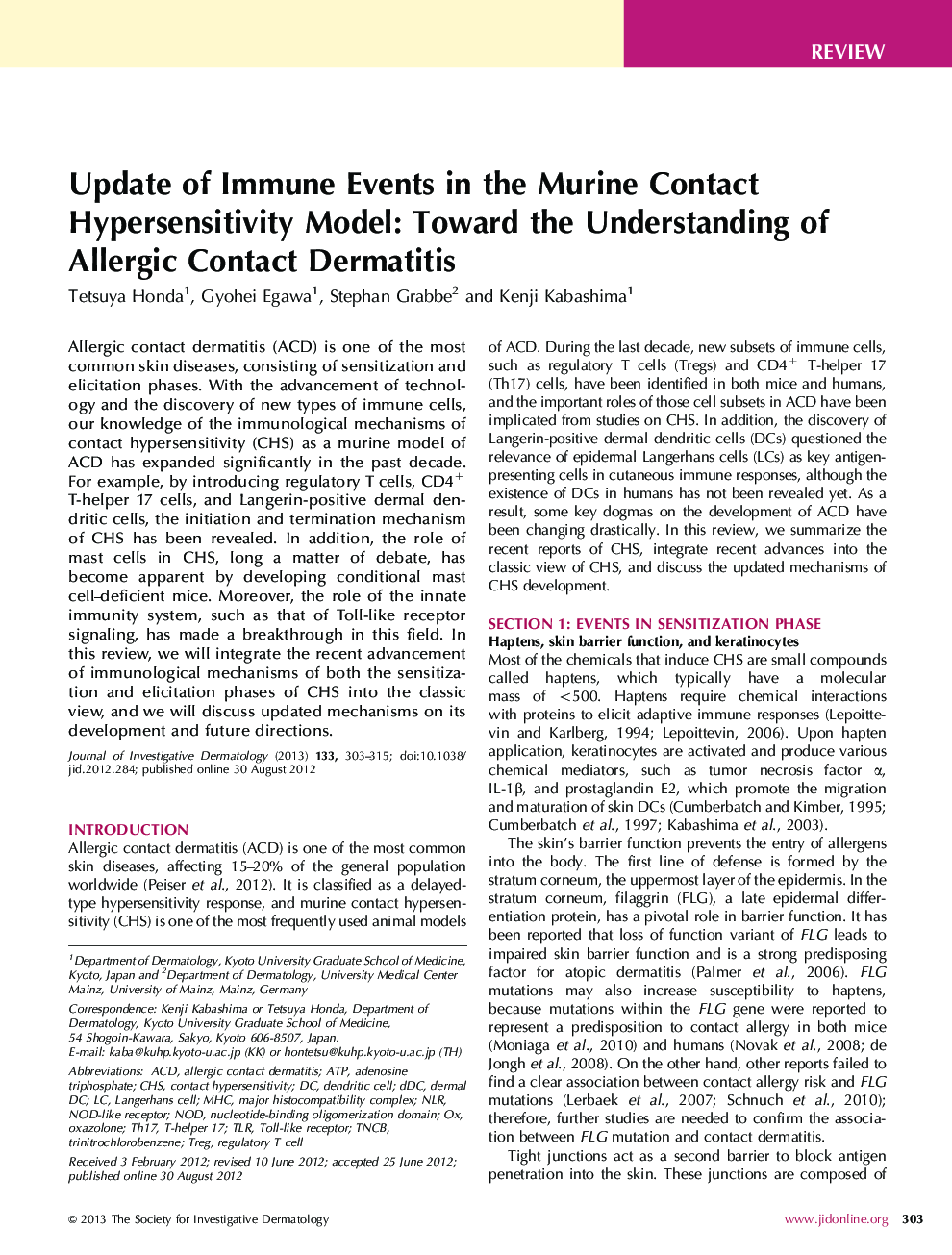| Article ID | Journal | Published Year | Pages | File Type |
|---|---|---|---|---|
| 6077953 | Journal of Investigative Dermatology | 2013 | 13 Pages |
Abstract
Allergic contact dermatitis (ACD) is one of the most common skin diseases, consisting of sensitization and elicitation phases. With the advancement of technology and the discovery of new types of immune cells, our knowledge of the immunological mechanisms of contact hypersensitivity (CHS) as a murine model of ACD has expanded significantly in the past decade. For example, by introducing regulatory T cells, CD4+ T-helper 17 cells, and Langerin-positive dermal dendritic cells, the initiation and termination mechanism of CHS has been revealed. In addition, the role of mast cells in CHS, long a matter of debate, has become apparent by developing conditional mast cell-deficient mice. Moreover, the role of the innate immunity system, such as that of Toll-like receptor signaling, has made a breakthrough in this field. In this review, we will integrate the recent advancement of immunological mechanisms of both the sensitization and elicitation phases of CHS into the classic view, and we will discuss updated mechanisms on its development and future directions.
Related Topics
Health Sciences
Medicine and Dentistry
Dermatology
Authors
Tetsuya Honda, Gyohei Egawa, Stephan Grabbe, Kenji Kabashima,
